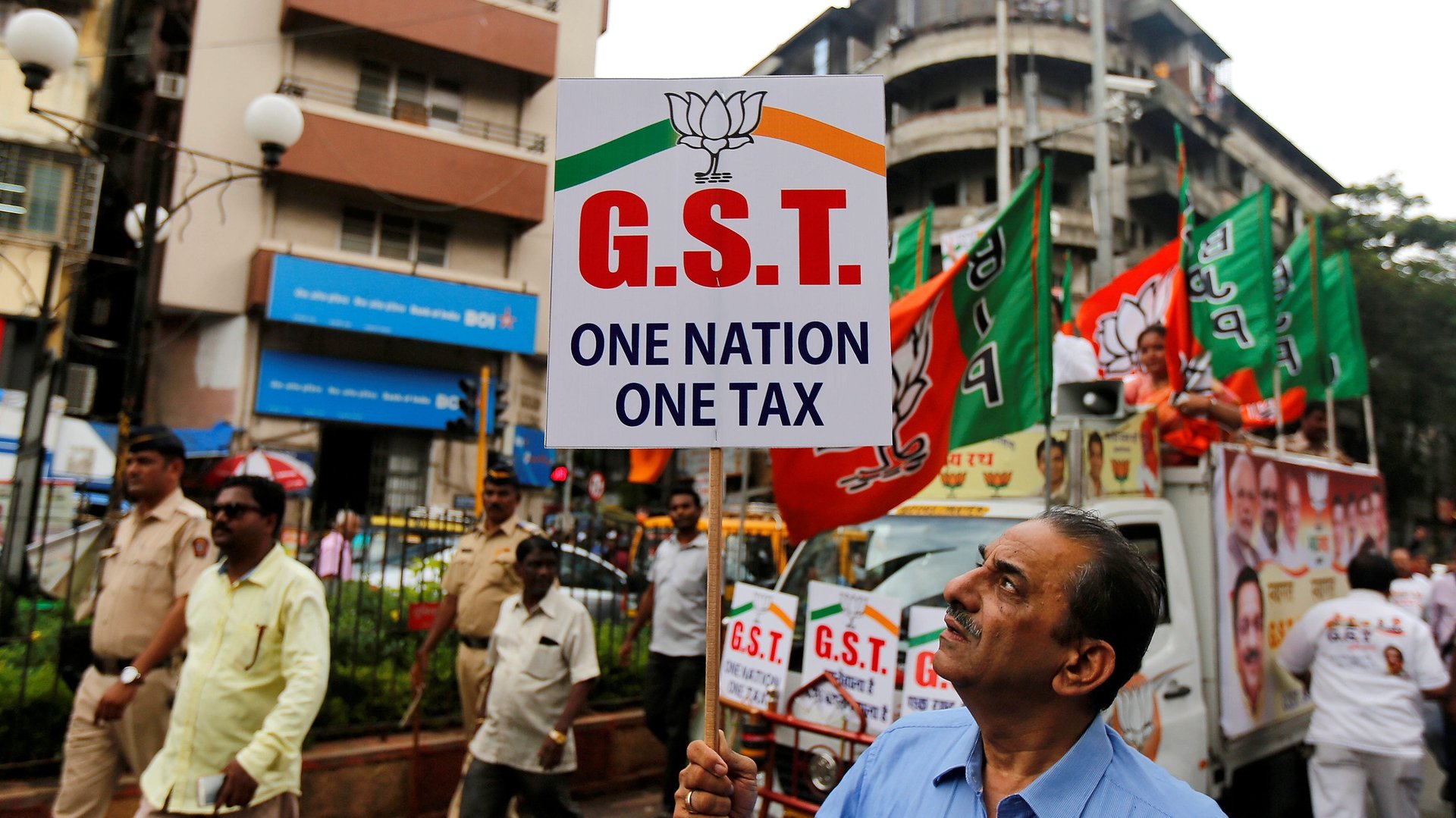India’s record tax collections are partly due to high inflation
India’s tax collections under the goods and services tax (GST) peaked at a record high of 1.68 lakh crore rupees ($21.96 billion) this April. But price pressures are a reason for this, besides economic recovery.


India’s tax collections under the goods and services tax (GST) peaked at a record high of 1.68 lakh crore rupees ($21.96 billion) this April. But price pressures are a reason for this, besides economic recovery.
Tax revenues from merchandise imports rose 30% year-on-year (pdf), according to a statement by the finance ministry on May 1. Those from domestic transactions, along with service imports, increased by 17%, it said.
“Even though the spike in April’s GST collections partly benefits from year-end adjustments, the all-time high magnitude of inflows is very enthusing, and augurs well for a robust year-on-year growth in the months ahead as well,” Aditi Nayar, chief economist of credit rating agency ICRA, told The Hindu newspaper.
Inflation has propped up GST collections
In the aftermath of the Ukraine war, crude oil prices have risen exponentially—from $82 a barrel in October to $112.8 a barrel in March. This has impacted the prices of petrochemicals, which are the key raw materials for industries such as pharmaceutical packaging, automobiles, paint, polyester, and synthetic rubber.
Besides, firm commodity prices in recent months have also lifted wholesale price-based inflation in the ongoing fiscal year to a 30-year high of 12.96%.
“This trend will continue as long as petroleum products remain under pressure as fuel prices translate into input costs in various sectors such as transport and feed into the retail level,” DK Srivastava, chief policy advisor at EY India told the Mint newspaper in April.
Apart from significant input costs for producers, experts have attributed the record collections to tighter input tax credit regulations.